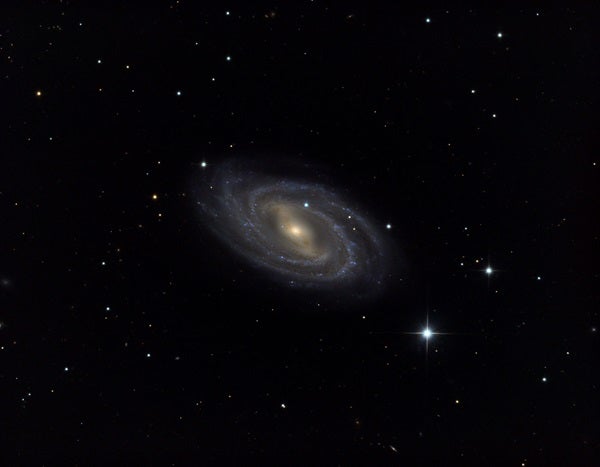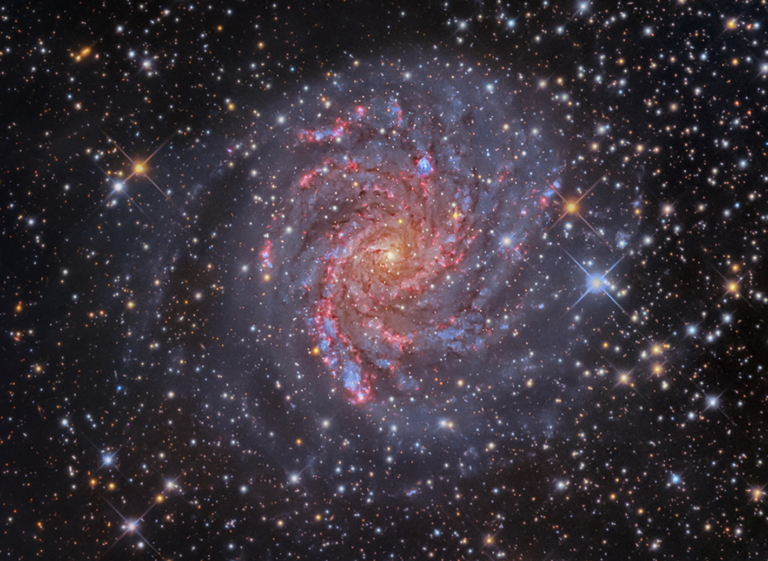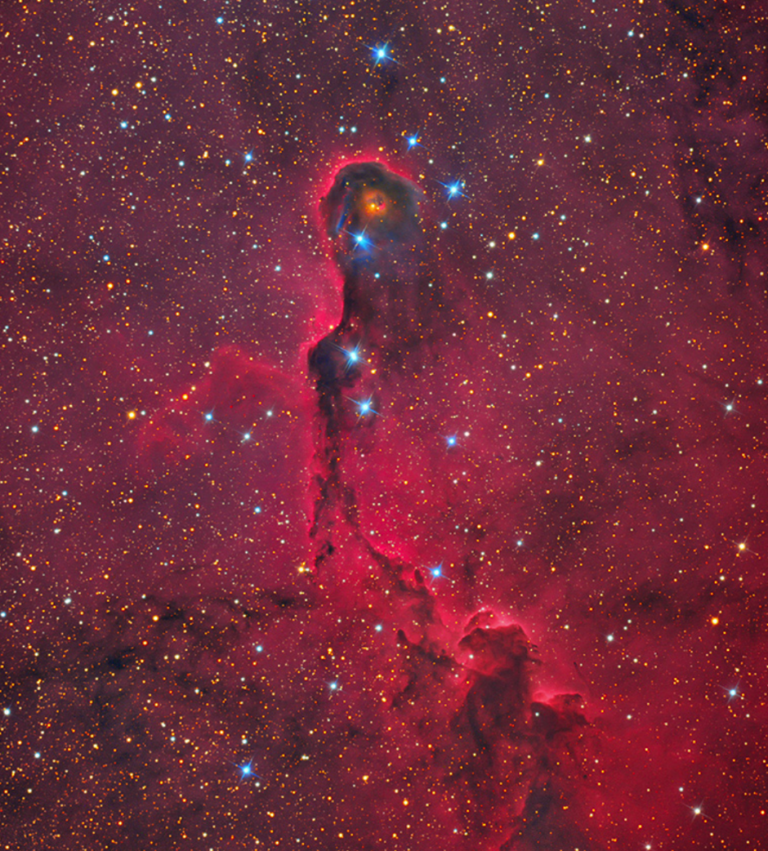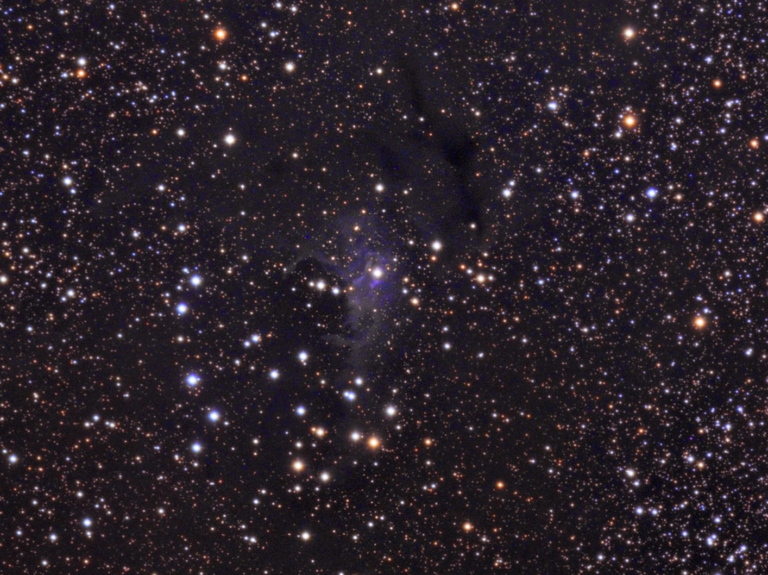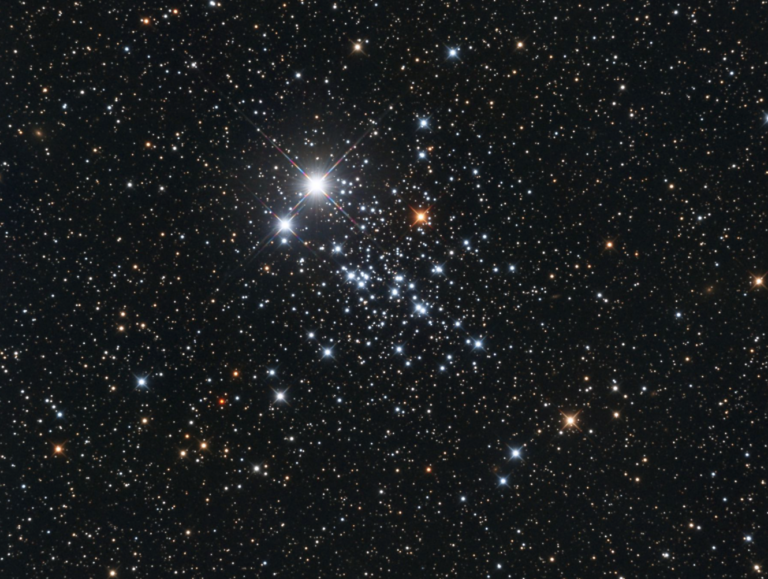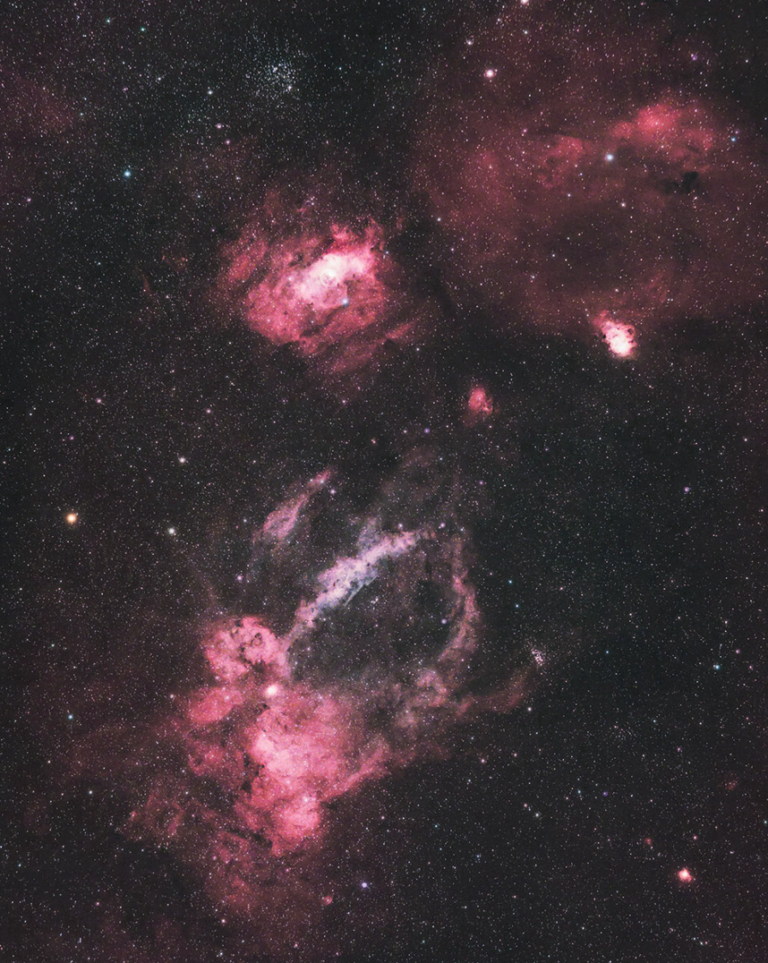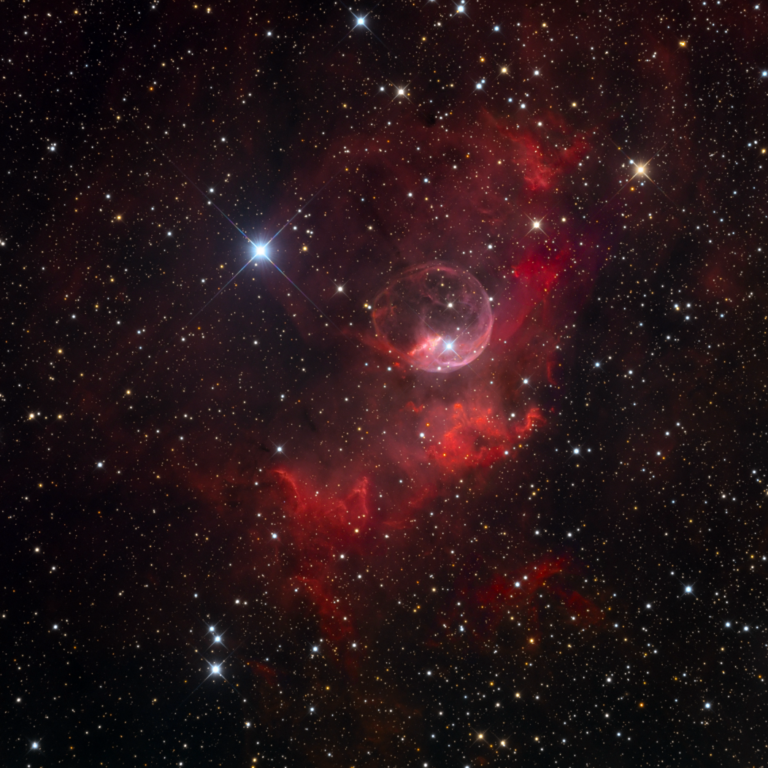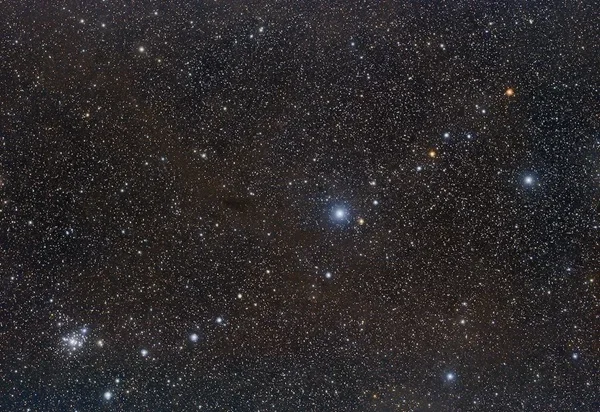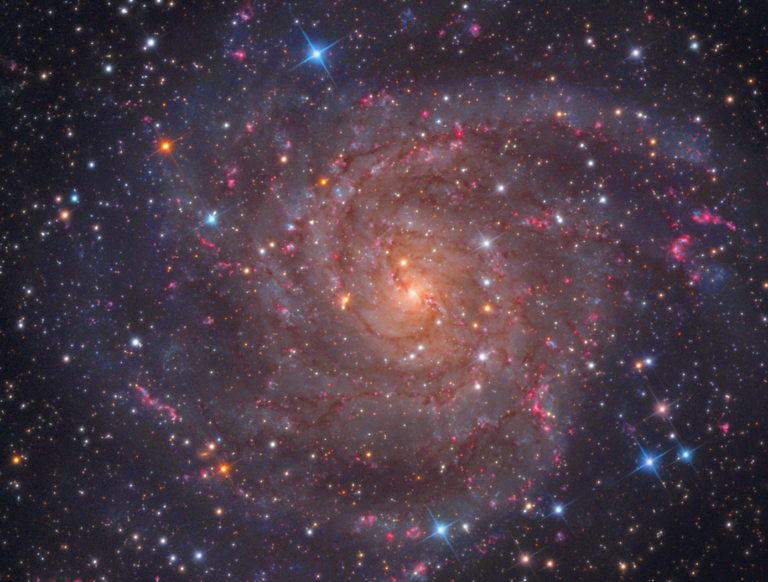The third-largest constellation in the sky, Ursa Major, contains seven Messier objects. Five are galaxies. The least observed of these — based on the number of books and articles featuring it — is M109, also known as NGC 3992. Messier’s original catalog topped out at 103, but today, astronomers recognize 109 objects.
Discovered in 1781 by Pierre Méchain, M109 is the most distant Messier object, located a whopping 83.5 million light-years away. (The closest is M45, the Pleiades open cluster, at only 445 light-years.) Although difficult to observe visually because of their low surface brightness, the galaxy’s arms are complex and somewhat symmetrical. M109 is a barred spiral, but unlike the more classic S-shaped galaxies of this type, its bar ends in short counterclockwise arms that wrap so closely on one another that they form what looks like an encompassing ring. Both large, clockwise (regular) arms split into two, giving the galaxy a modified S shape. As a result, M109 is classified as an SBbc(rs) galaxy, with rs indicating it has both ring and S-shaped structure. Only one supernova, which went off in 1956 and reached magnitude 12.4, has been documented in this galaxy.
For a non-naked-eye object, M109 is easy to locate, only ¾° southeast of Phecda (Gamma [γ] Ursae Majoris). Under low power, the star can interfere with seeing M109 at its best. The galaxy’s visual magnitude is 10.6, bright enough to be seen in small scopes. Its dimensions of 7.6′ by 4.7′ make it larger than many galaxies, but it is one of the smallest Messier galaxies in Ursa Major. (Only M102 [NGC 5866] is smaller.) As galaxies go, it’s unimpressive with small instruments. All you will see is the condensed core and the brightest part of the bar. Even larger scopes have trouble with the low-contrast detail unless the night is free of light pollution.
M109 is the brightest member of the M109 Group, which consists of about 33 mostly spiral galaxies spanning 11° in declination and 40′ in right ascension. The closest bright member is NGC 3953, a 10th-magnitude SBbc spiral with a tiny bar and multiple arms, which sits roughly 1° southeast of M109.
Make sure to explore Astronomy’s full list of 101 cosmic objects you must see. New entries will be added each week throughout 2022.
To get the latest astronomical news and observing content delivered directly to your door, subscribe to Astronomy magazine today!

